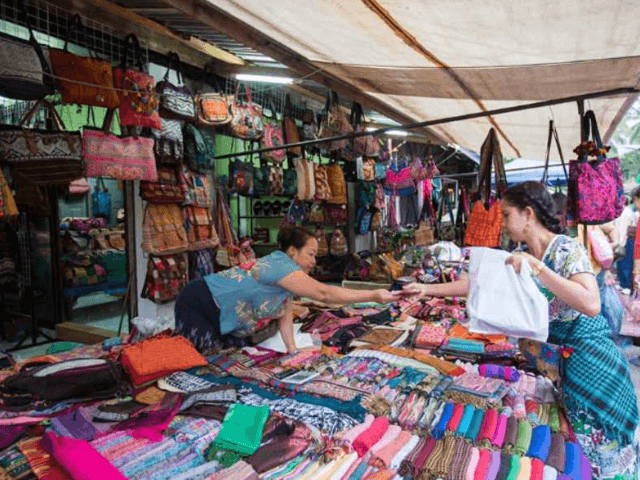Spring festivals in the North are one of the ideal choices to pray for peace combined with discovering the cultural beauty of the nation when choosing a Vietnam tour. Let's explore with Threeland Travel the top of the most unique and sacred spring f
TABLE OF CONTENTS
1
Discover the 11 Most Unique Spring Festivals in Northern Vietnam
2
3
Introduction to Northern Vietnam’s Spring Festivals
Why Spring is the Best Time to Experience Local Festivals
The Cultural Significance of Spring Celebrations
How These Festivals Reflect Vietnam’s Heritage & Traditions
4
Top 11 Unique Spring Festivals in Northern Vietnam
Huong Pagoda Festival (Hanoi)
5
Yen Tu Festival (Quang Ninh)
6
Giong Festival (Hanoi - Soc Temple & Phu Dong Temple)
Lim Festival (Bac Ninh)
Dong Da Festival (Hanoi)
Tay Thien Festival (Vinh Phuc)
Co Loa Festival (Hanoi)
Chua Keo Festival (Thai Binh)
7
Ba Chua Kho Festival (Bac Ninh)
8
Long Tong Festival (Tuyen Quang, Bac Kan, Lao Cai, and Ha Giang)
9
Khau Vai Love Market Festival (Ha Giang)
10
How to Experience Spring Festivals Like a Local
Cultural Etiquette & Festival Dos and Don’ts
What to Pack for a Comfortable Festival Trip
Must-Try Festival Foods & Local Delicacies
Where to Stay Near Major Festival Locations
Transportation Tips for Smooth Travel
11
Conclusion - Why You Shouldn’t Miss These Unique Spring Festivals
Key Takeaways for Festival Enthusiasts
How to Make the Most of Your Spring Adventure in Vietnam
Discover the 11 Most Unique Spring Festivals in Northern Vietnam
As spring unfolds across Northern Vietnam, the entire region comes alive with vibrant festivals that celebrate culture, heritage, and the changing of seasons. From ancient rituals honoring ancestors to exhilarating competitions showcasing local traditions, these festivals offer a glimpse into the rich spiritual and communal life of the Vietnamese people. Whether you're a traveler looking to immerse yourself in authentic cultural experiences or simply curious about Vietnam’s unique customs, spring is the perfect time to witness these lively celebrations. Let’s explore some of the most fascinating spring festivals in Northern Vietnam and the deep cultural significance behind them.
Introduction to Northern Vietnam’s Spring Festivals
Spring in Northern Vietnam isn’t just about blooming flowers and mild weather-it’s also the season of grand festivities. From January to April, countless festivals take place, bringing together locals and visitors to honor their ancestors, pray for prosperity, and enjoy traditional entertainment. These festivals are deeply embedded in Vietnam’s history and are often tied to historical figures, legendary events, or spiritual beliefs.
Why Spring is the Best Time to Experience Local Festivals
Spring is a time of renewal, marking the end of a cold winter and the arrival of warmer days. It also follows Tet (Lunar New Year), the most important holiday in Vietnam, making it an auspicious period for celebrations. Many festivals during this time revolve around:
- Prayers for a bountiful harvest and good fortune.
- Honoring legendary heroes and spirits.
- Expressing gratitude to ancestors and deities.
- Community bonding through games, performances, and feasts.
Since many of these festivals are held outdoors, the pleasant weather of spring makes it an ideal time to participate. Lush landscapes, blooming peach blossoms, and lively village atmospheres enhance the festive spirit, making each event a truly immersive experience.
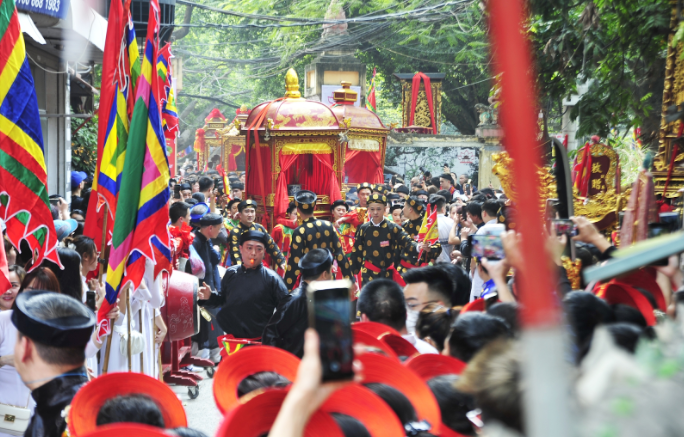
The Cultural Significance of Spring Celebrations
Vietnamese festivals are more than just fun gatherings; they carry deep cultural and spiritual meanings. Many spring festivals trace their roots back centuries and are often linked to Buddhism, Confucianism, or indigenous animist beliefs. Key cultural aspects found in these festivals include:
- Ancestor Worship & Spirituality: Many celebrations include rituals where offerings are made to honor ancestors and deities, reflecting the Vietnamese belief in the afterlife and spiritual protection.
- Historical Legends & Folk Heroes: Several festivals commemorate national heroes or mythical figures who played crucial roles in Vietnam’s history.
- Agricultural Blessings: As a traditionally agrarian society, many festivals revolve around rice cultivation and seeking blessings for a fruitful harvest.
- Community & Unity: Festivals bring together entire villages, strengthening social bonds and reinforcing cultural identity.

How These Festivals Reflect Vietnam’s Heritage & Traditions
Northern Vietnam’s spring festivals beautifully preserve age-old customs, ensuring that traditions are passed down through generations. Through elaborate processions, traditional games, folk music, and ceremonial offerings, these celebrations provide a window into Vietnam’s past and its enduring cultural values.
Some festivals incorporate dramatic re-enactments of historical battles, while others involve communal activities like bamboo pole dancing, tug-of-war, or firework displays. Many festivals also feature regional cuisine, giving visitors a taste of Vietnam’s diverse culinary heritage.
By experiencing these festivals, you’ll gain a deeper appreciation for Vietnam’s rich traditions, the spiritual beliefs of its people, and the enduring sense of community that defines the country’s culture. Now, let’s dive into the 11 most unique spring festivals in Northern Vietnam that you shouldn’t miss!
Top 11 Unique Spring Festivals in Northern Vietnam
Huong Pagoda Festival (Hanoi)
Vietnam’s Largest Buddhist Pilgrimage Festival
The Huong Pagoda Festival, held in My Duc District of Hanoi, is Vietnam’s largest and longest-running Buddhist pilgrimage festival. It takes place from the 6th day of the first lunar month and lasts until the third lunar month, attracting thousands of visitors who come to pray for blessings, health, and prosperity.
Spiritual Journey through Caves and Mountains
The festival is set in a breathtaking landscape of limestone mountains and serene waterways. Pilgrims travel by boat along the Yen Stream to reach the sacred Huong Tich Cave, which serves as the main worship site. Along the way, visitors can explore various pagodas and temples nestled within the mountains.
Best Time to Visit & Travel Tips
-
Best time: Mid-February to early March, when the weather is pleasant and crowds are manageable.
-
Travel tip: Arrive early in the morning to avoid the biggest crowds and fully enjoy the peaceful scenery.
-
What to bring: Comfortable walking shoes, as the trek up to the pagodas involves many stone steps.
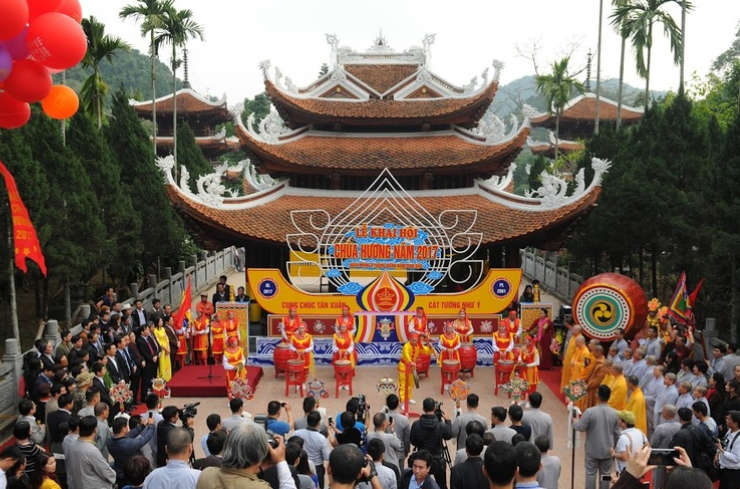
Yen Tu Festival (Quang Ninh)
Sacred Mountain Trek to the Zen Buddhist Site
The Yen Tu Festival, held in Quang Ninh Province, is a sacred pilgrimage to one of Vietnam’s most significant Buddhist sites. It honors King-Monk Tran Nhan Tong, who renounced his throne to establish the Truc Lam Zen sect in the 13th century.
Annual Pilgrimage to Pay Tribute to King-Monk Tran Nhan Tong
Pilgrims ascend Yen Tu Mountain, passing through historical pagodas and temples along the way, including Hoa Yen Pagoda and Dong Pagoda at the peak. The festival officially begins on the 10th day of the first lunar month and lasts for about three months.
Things to Do at Yen Tu Mountain
-
Hiking: Climbing to the summit for breathtaking panoramic views.
-
Cable car ride: A scenic alternative for those who prefer a less strenuous journey.
-
Spiritual ceremonies: Join prayers and offerings to pay respect to the King-Monk.

Giong Festival (Hanoi - Soc Temple & Phu Dong Temple)
Celebrating Vietnam’s Legendary Hero, Saint Giong
The Giong Festival, recognized as a UNESCO Intangible Cultural Heritage, is held to honor Saint Giong, a mythical hero who fought against invaders to protect Vietnam. The festival takes place at two locations: Soc Temple (Soc Son) and Phu Dong Temple (Gia Lam, Hanoi).
Ritual Performances and Military Reenactments
A highlight of the festival is the reenactment of Saint Giong’s legendary battle, featuring symbolic combat scenes, martial arts performances, and ceremonial offerings.
Best Viewing Spots for Visitors
-
Soc Temple: Ideal for witnessing the main procession and traditional rituals.
-
Phu Dong Temple: Best place to see the dynamic battle reenactments.
-
Tip: Arrive early to secure a good viewing spot for the parades and performances.
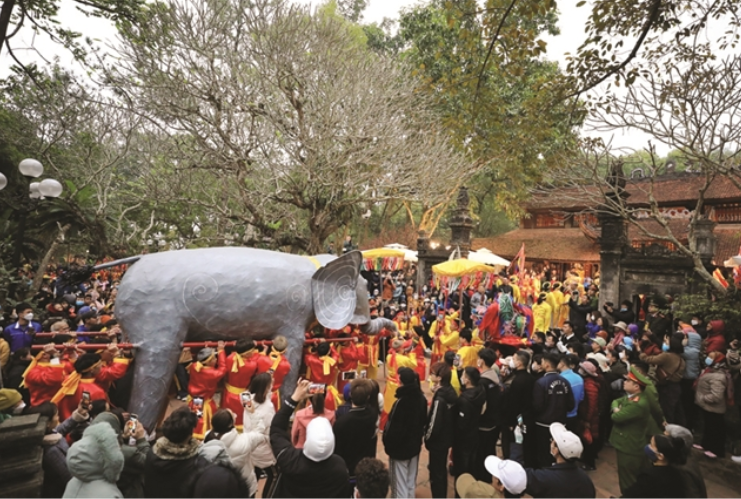
Lim Festival (Bac Ninh)
Experience Vietnam’s Famous Quan Ho Folk Singing
The Lim Festival is a vibrant cultural event that showcases the renowned Quan Ho folk singing tradition of Bac Ninh Province. This festival celebrates the unique vocal art form, which is recognized by UNESCO as an Intangible Cultural Heritage.
Traditional Costumes & Cultural Performances
Visitors can admire the elaborate traditional attire of the performers, including “ao tu than” (four-panel traditional dress) and “non quai thao” (flat-brimmed hats). The festival also features processions, calligraphy displays, and folk games.
Interactive Activities for Tourists
-
Join a Quan Ho duet with local singers.
-
Watch water puppet shows and traditional dances.
-
Participate in folk games such as bamboo swings and tug-of-war.
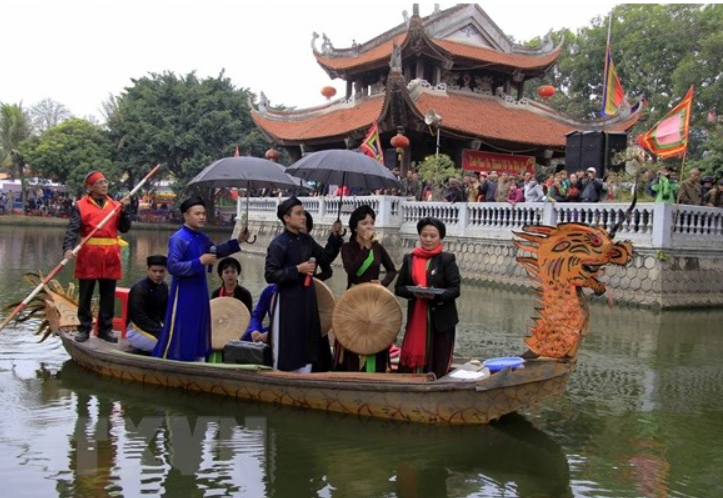
Dong Da Festival (Hanoi)
Commemorating the Victory of Emperor Quang Trung
The Dong Da Festival is held annually on the 5th day of the first lunar month to celebrate Emperor Quang Trung’s victory over the Qing invaders in 1789.
Martial Arts Displays & Historical Parades
The festival features thrilling martial arts demonstrations and a grand parade reenacting the historical battle.
How to Join the Festivities
-
Visit Dong Da Hill in Hanoi for the main celebrations.
-
Watch live reenactments of the battle.
-
Enjoy cultural performances, including drumming and dragon dances.
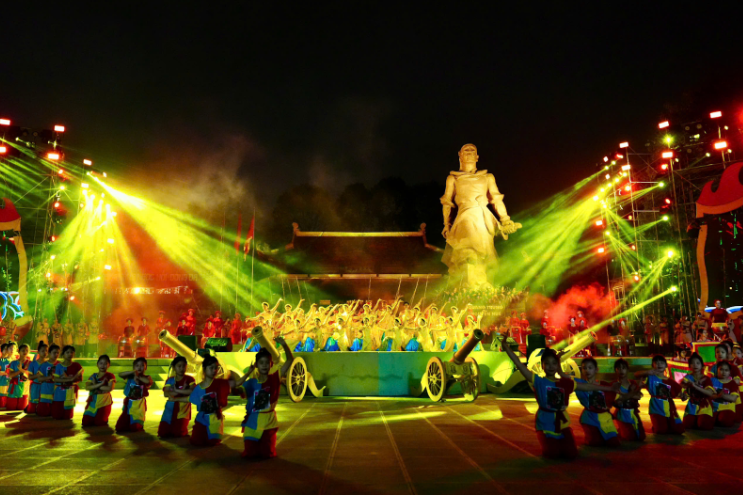
Tay Thien Festival (Vinh Phuc)
Blend of Buddhism & Folk Beliefs in a Scenic Setting
Set amidst the majestic Tam Dao mountains, the Tay Thien Festival is a harmonious blend of Buddhist traditions and indigenous folk beliefs. The festival honors the Mother Goddess Lang Thi Tieu, who is believed to have helped King Hung establish Vietnam’s early civilization. It is held from the 15th day of the first lunar month and attracts thousands of pilgrims seeking blessings.
Climbing Tay Thien Mountain for Spiritual Blessings
Visitors embark on a scenic yet challenging trek up Tay Thien Mountain, passing through dense forests, waterfalls, and ancient temples. The journey is considered a spiritual purification process, symbolizing the connection between nature and the divine.
Tips for First-Time Visitors
-
Take the cable car for a more relaxed ascent.
-
Bring comfortable shoes for the hike.
-
Visit early in the morning to enjoy the serene atmosphere.
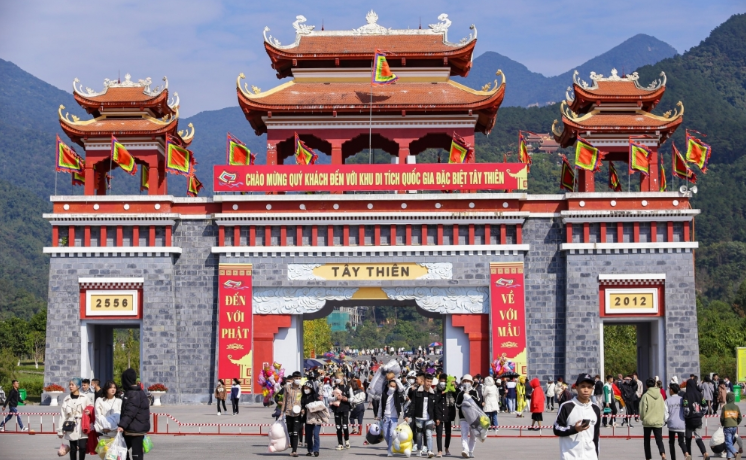
Co Loa Festival (Hanoi)
Honoring King An Duong Vuong & the Ancient Co Loa Citadel
The Co Loa Festival is dedicated to King An Duong Vuong, the founder of Vietnam’s legendary Au Lac Kingdom. Held at the historic Co Loa Citadel on the 6th day of the first lunar month, this festival celebrates Vietnam’s early history and national pride.
Mythology of the Magic Crossbow & Vietnam’s Early History
Legend has it that King An Duong Vuong owned a magical crossbow that made his kingdom invincible. The festival includes storytelling sessions and reenactments of these ancient legends.
Best Time to Visit & Local Food to Try
The best time to visit is early in the day to enjoy the parades.
Don’t miss local specialties like banh chung (sticky rice cake) and che lam (sweet sticky rice dessert).

Chua Keo Festival (Thai Binh)
Ancient Pagoda Celebration with Traditional Rituals
The Chua Keo Festival is celebrated at one of Vietnam’s oldest pagodas, showcasing ancient Buddhist architecture and traditional ceremonies.
Dragon Boat Racing & Unique Religious Offerings
A key highlight is the exciting dragon boat races, symbolizing spiritual journeys and perseverance. Ritual offerings and communal feasts further enhance the festival’s significance.
Why This Festival is a Must-See for Cultural Enthusiasts
For those interested in ancient Vietnamese culture, the festival offers a rare glimpse into traditional Buddhist practices and rural community life.
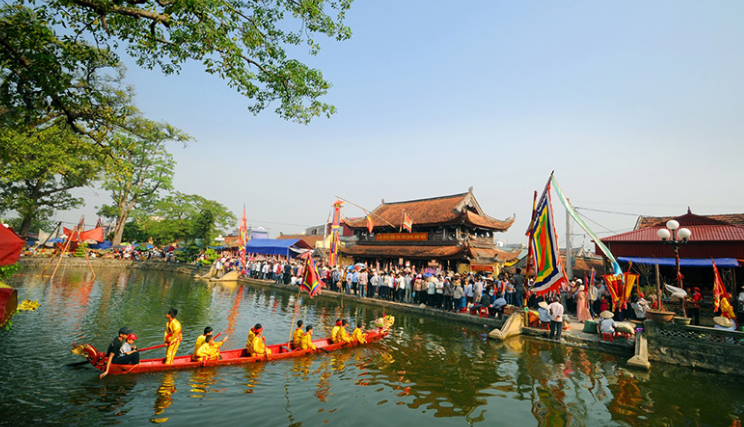
Ba Chua Kho Festival (Bac Ninh)
Worshipping the Goddess of Wealth & Prosperity
The Ba Chua Kho Festival is held to honor the Goddess of Wealth, who is believed to bless businesses and ensure financial success.
Rituals for Business Success & Financial Blessings
Entrepreneurs and business owners flock to Ba Chua Kho Temple to offer symbolic money and prayers for a prosperous year ahead.
How to Make the Most of Your Visit
-
Prepare small offerings for blessings.
-
Visit early to avoid crowds and have a peaceful experience.

Long Tong Festival (Tuyen Quang, Bac Kan, Lao Cai, and Ha Giang)
Traditional Festival of the Tay Ethnic Group
The Long Tong Festival, meaning “Going to the Fields”, is a major celebration of the Tay ethnic community, praying for agricultural prosperity.
Rituals for Agricultural Prosperity & Good Harvests
The festival includes ceremonies offering food to deities and a symbolic plowing ritual to mark the start of a fruitful farming season.
Participating in Ethnic Games & Folk Performances
Visitors can engage in folk games like stilt walking, archery, and traditional dances.
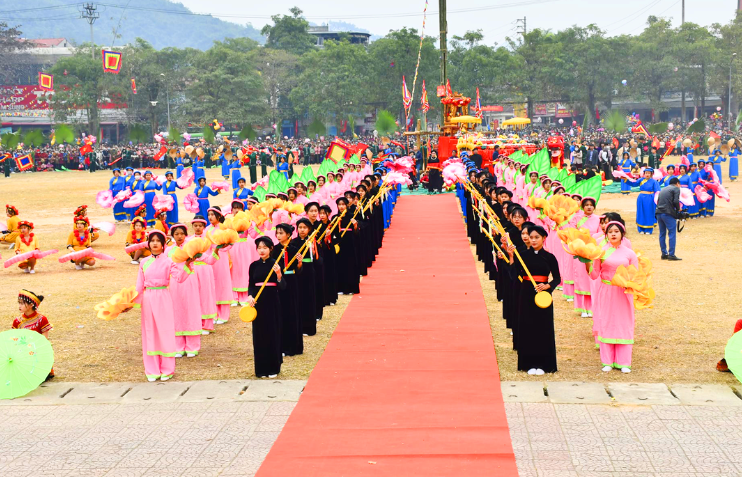
Khau Vai Love Market Festival (Ha Giang)
The Most Romantic Festival in Vietnam
Held once a year on the 27th day of the third lunar month, the Khau Vai Love Market is a unique festival where past lovers reunite for one night, regardless of their current marital status.
Where Lovers from Different Ethnic Groups Reunite
People from various ethnic groups gather in Ha Giang, dressed in their finest traditional attire, to rekindle old romances or make new connections.
Unique Market Experience with Food & Handicrafts
Besides its romantic allure, the festival features a bustling market where visitors can sample local delicacies and buy handcrafted souvenirs.

How to Experience Spring Festivals Like a Local
Cultural Etiquette & Festival Dos and Don’ts
Participating in Vietnamese festivals requires an understanding of cultural norms and etiquette. Some key dos and don’ts include:
-
Do dress modestly, especially when visiting temples and pagodas.
-
Do bring small offerings such as incense or flowers when attending spiritual ceremonies.
-
Do respect local customs and ask for permission before taking photos of rituals.
-
Don’t push or cut in line, as many festivals attract large crowds, and patience is essential.
-
Don’t touch sacred objects unless explicitly allowed by temple staff.
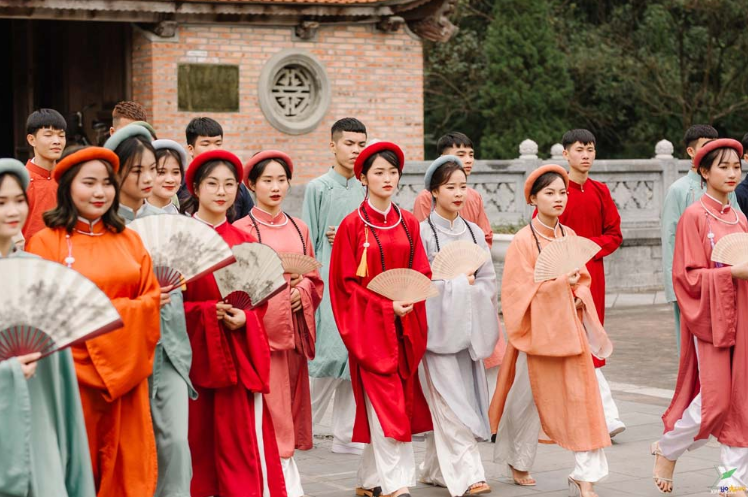
What to Pack for a Comfortable Festival Trip
To ensure a smooth and enjoyable festival experience, consider packing:
-
Comfortable shoes for walking long distances or climbing steps.
-
Light clothing with layers, as temperatures can vary throughout the day.
-
A small backpack to carry essentials like water, snacks, and a rain poncho.
-
Cash for food, souvenirs, and offerings, as some vendors may not accept card payments.
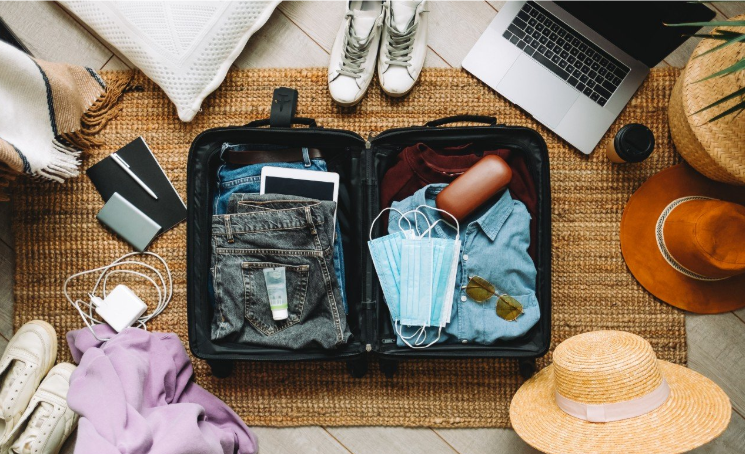
Must-Try Festival Foods & Local Delicacies
No festival experience is complete without trying some traditional Vietnamese festival foods, such as:
-
Banh Chung & Banh Day - Sticky rice cakes associated with ancestor worship and Tet celebrations.
-
Che Troi Nuoc - Sweet glutinous rice dumplings in ginger syrup, symbolizing reunion and warmth.
-
Grilled Meat Skewers - Popular street food available at many festival stalls.
-
Rice Wine - Often enjoyed during celebrations, symbolizing good luck and togetherness.
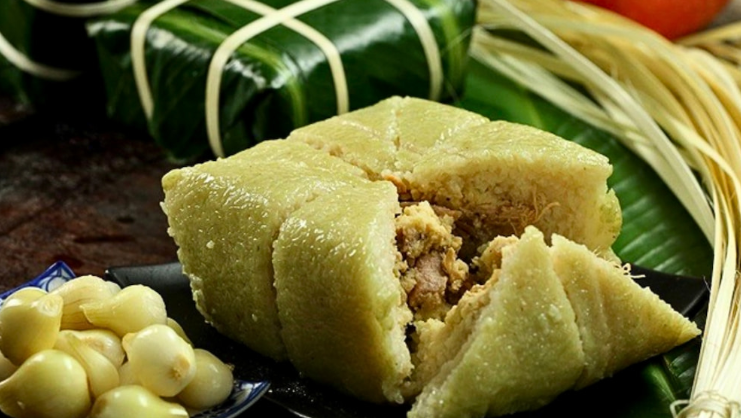
By following these tips, you’ll be able to fully enjoy Vietnam’s spring festivals and immerse yourself in the country’s rich cultural traditions.
Planning Your Spring Festival Tour in Northern Vietnam
Best Travel Routes & Suggested Itineraries
Spring festivals in Northern Vietnam are spread across various provinces, requiring careful planning to make the most of your trip. If you have limited time, consider focusing on a specific region rather than trying to visit too many locations.
A popular route for festival-goers is the Hanoi - Perfume Pagoda - Yen Tu journey. This itinerary allows you to experience Vietnam’s largest Buddhist pilgrimage at Huong Pagoda Festival, followed by the serene spiritual trek at Yen Tu Festival. Both destinations are easily accessible from Hanoi, making this a perfect short trip.
For those wanting a deeper cultural immersion, a 7-day Northern Vietnam festival tour could include stops at Co Loa Festival in Hanoi, Ba Chua Kho Festival in Bac Ninh, and the Long Tong Festival in the mountainous regions of Tuyen Quang or Ha Giang. These festivals offer a mix of historical legends, spiritual blessings, and ethnic minority traditions, giving you a well-rounded experience of Vietnam’s diverse heritage.
If you’re looking for something truly unique, plan your trip around the Khau Vai Love Market Festival in Ha Giang, where ethnic minority groups reunite for a romantic and colorful gathering. Pair this with a road trip through Ha Giang’s majestic landscapes, and you’ll have an unforgettable adventure.

Where to Stay Near Major Festival Locations
Since many spring festivals take place in temples, rural villages, or mountainous areas, accommodation options vary from budget guesthouses to high-end resorts. Here are some recommendations for festival-goers:
-
Hanoi & Bac Ninh: If you're attending festivals near Hanoi (such as Co Loa or Ba Chua Kho), staying in Hanoi’s Old Quarter provides easy access to transportation, street food, and cultural sites.
-
Perfume Pagoda (Huong Pagoda Festival): The nearest accommodations are in My Duc District, but many visitors opt to stay in Hanoi and take a day trip.
-
Yen Tu Festival (Quang Ninh): Legacy Yen Tu - MGallery is a luxury resort offering a peaceful retreat right at the foot of Yen Tu Mountain. Budget-friendly guesthouses are also available in Uong Bi City.
-
Ha Giang & Northern Highlands: If you’re attending the Khau Vai Love Market Festival or the Long Tong Festival, consider homestays in Dong Van, Meo Vac, or Bac Kan for an authentic local experience.
Booking accommodations in advance is highly recommended, especially for popular festivals that attract large crowds.
Transportation Tips for Smooth Travel
Traveling between festival locations requires flexibility, as some destinations have limited transport options. Here are some travel tips:
-
Public Buses & Private Transfers: Many festival sites, like Perfume Pagoda and Yen Tu, are accessible by local buses from Hanoi, but hiring a private car or motorbike can provide more convenience and flexibility.
-
Motorbike Travel: For adventurous travelers, renting a motorbike is a great way to explore northern Vietnam’s mountainous areas, especially for festivals like Long Tong or Khau Vai Love Market. However, always check road conditions and ensure you have the necessary experience.
-
Trains & Domestic Flights: If your festival tour includes distant locations like Yen Tu or Ha Giang, taking a train to Hai Phong or Quang Ninh or a flight to Noi Bai Airport (Hanoi) can help shorten travel time.
Since festival season means crowded roads, it’s advisable to leave early for events, especially those held in remote areas with limited transportation options.
Conclusion - Why You Shouldn’t Miss These Unique Spring Festivals
-
Spring festivals in Northern Vietnam are more than just lively gatherings-they are a reflection of the country’s rich heritage, deep spirituality, and strong sense of community. Whether you’re drawn to the grand processions of ancient temples, the vibrant energy of folk games, or the serene beauty of Buddhist pilgrimages, each festival offers a unique window into Vietnamese culture.
-
Experiencing these festivals firsthand allows you to witness centuries-old traditions still being preserved today. From the misty peaks of Yen Tu to the bustling crowds at Perfume Pagoda, the festivals of Northern Vietnam promise unforgettable memories for travelers seeking authentic cultural immersion.
-
If you’re planning a trip to Vietnam, aligning your visit with the spring festival season will add a special touch to your journey-one filled with meaningful experiences, warm hospitality, and a deeper connection to the country’s traditions.
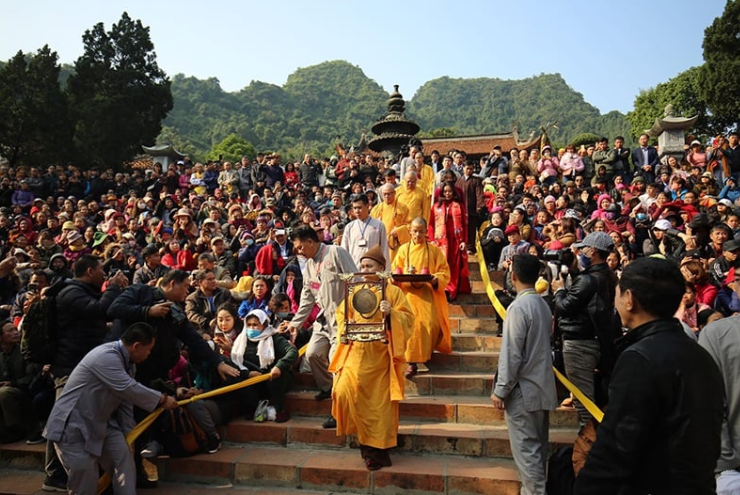
Key Takeaways for Festival Enthusiasts
-
Cultural immersion: These festivals provide a rare opportunity to see Vietnam’s historical and spiritual traditions come to life.
-
Diverse experiences: From solemn Buddhist pilgrimages to exhilarating folk games, there’s something for every type of traveler.
-
Best time to visit: Spring (January to April) is the ideal season, with pleasant weather and a festive atmosphere across the region.
-
Travel planning is key: Some festival sites are in remote areas, so researching transportation and accommodation in advance will enhance your trip.
-
Respect local customs: Modest dress, patience in crowded areas, and understanding cultural etiquette will help you blend in and enjoy the festivals to the fullest.

How to Make the Most of Your Spring Adventure in Vietnam
-
Plan your itinerary wisely: With so many festivals happening at the same time, prioritize the ones that align with your interests. Whether it's the spiritual journey to Yen Tu, the thrilling boat races of Lim Festival, or the ethnic minority traditions at Khau Vai Love Market, each event offers a unique perspective.
-
Engage with locals: Festivals are about community, so don’t hesitate to interact with local people, join in traditional games, or sample homemade festival delicacies.
-
Capture the moments: Bring a camera or smartphone to document the colorful celebrations, but always be mindful and respectful when taking photos, especially during religious rituals.
-
Come with an open mind: Some festivals may involve unfamiliar customs or large, bustling crowds. Embrace the experience, go with the flow, and enjoy the vibrant energy of Vietnam’s spring celebrations.
With its deep-rooted traditions, breathtaking landscapes, and warm local hospitality, Northern Vietnam’s spring festival season is a magical time to visit. Whether you're a culture enthusiast, an adventure traveler, or simply looking to experience something new, these festivals promise an unforgettable journey into the heart of Vietnam.











